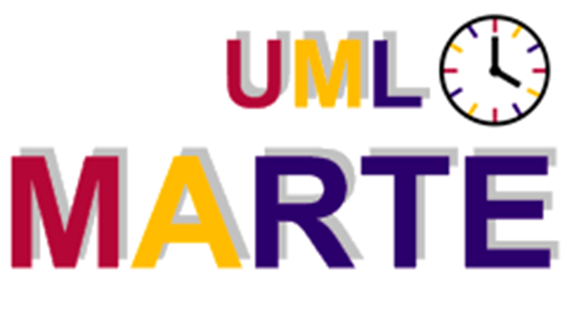Last September, at the 2017 FDL conference, MegaM@Rt partners from UCAN presented this position paper: Towards MARTE++: an enhanced UML-based language to Model and Analyse Real-Time and Embedded Systems for the IoT age [1] (pdf available) proposing some key aspect in which they consider that MARTE needs to evolve.
They may be summarized as the need for:
- A high-level application modelling semantics for analyzability and conformance to executable fUML.
- Modelling of allocation for modern platforms and the assignment and management of mixed criticalities.
- Design, performance and safety assessment for embedded systems that are connected through general purpose and ad-hoc networks.
- The inclusion of specific analysis domains. Either as normative examples, sub-profiles, or providing a way to plug them into the language. Domains like: Dependability, profiling cache and stack usage (for worst case estimation), power consumption, temperature spatial distribution/heat dissipation, cost and security impact of design decisions, inner complexity, criticality aware allocation, contract-based design, …
- Extended allocation tactics that include multiple choices for model-based design space exploration.
- Hardware and/or Software synthesis. This is an enlarged design space trend for which links to hardware description languages, and again richer kinds of allocation will have to be explored.
- Managing views and tracing mechanisms along the development process and iterative validation strategies. An enhanced version of MARTE should help practitioners to link models with specific phases of the development process followed.
A normative coherent and complementary version of all the domain models of the current version of MARTE. Defining very precise and decoupled modeling scopes and associating to them exclusive modeling elements that may conform complementing dialects of MARTE. The needed dialects might be defined in the form of inter-related domain-specific languages. All of them would be supported by a complete common meta-model whose semantics must be fixed in accordance to the UML meta-model and the executable UML related specifications. The normative or non-normative quality of this complete meta-model would need to be discussed and clearly specified in the requirements of the RFP. Alternatively, stricter conformance cases (see clause 6 or MARTE) may be used instead to define the dialects able to be used in that strict normative way.
[1] Towards MARTE++: an enhanced UML-based language to Model and Analyse Real-Time and Embedded Systems for the IoT age. J. Medina and E. Villar. In Proceedings of FDL’2017

